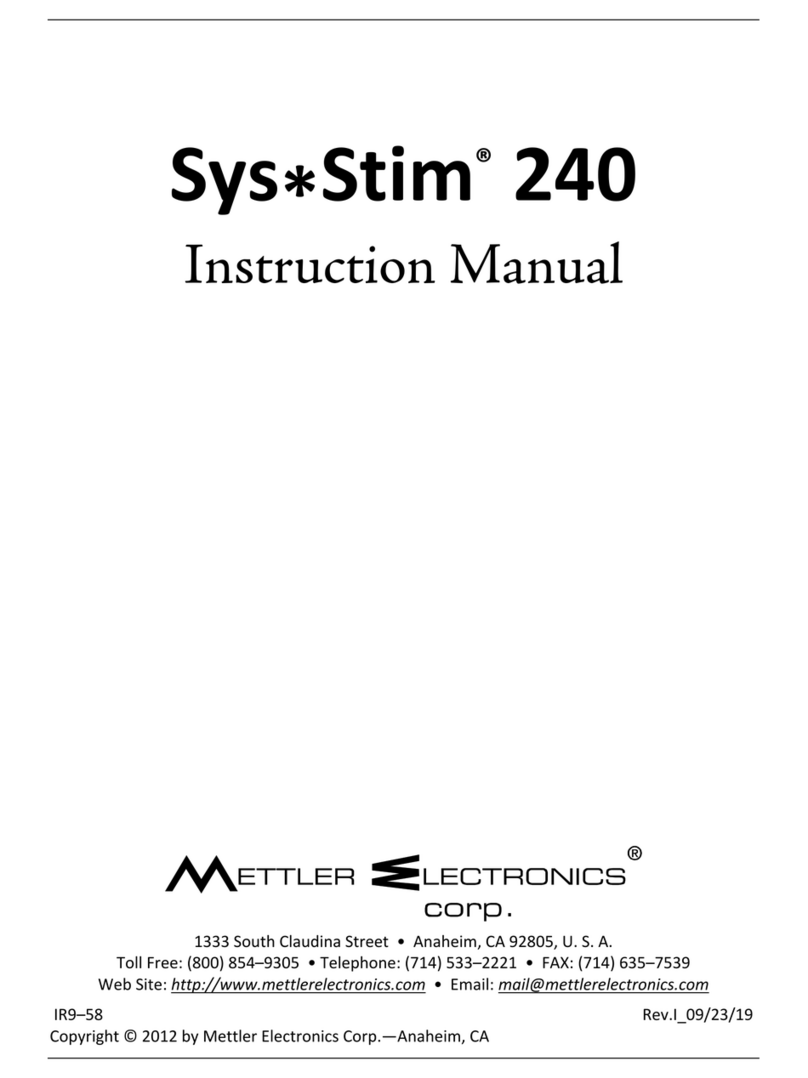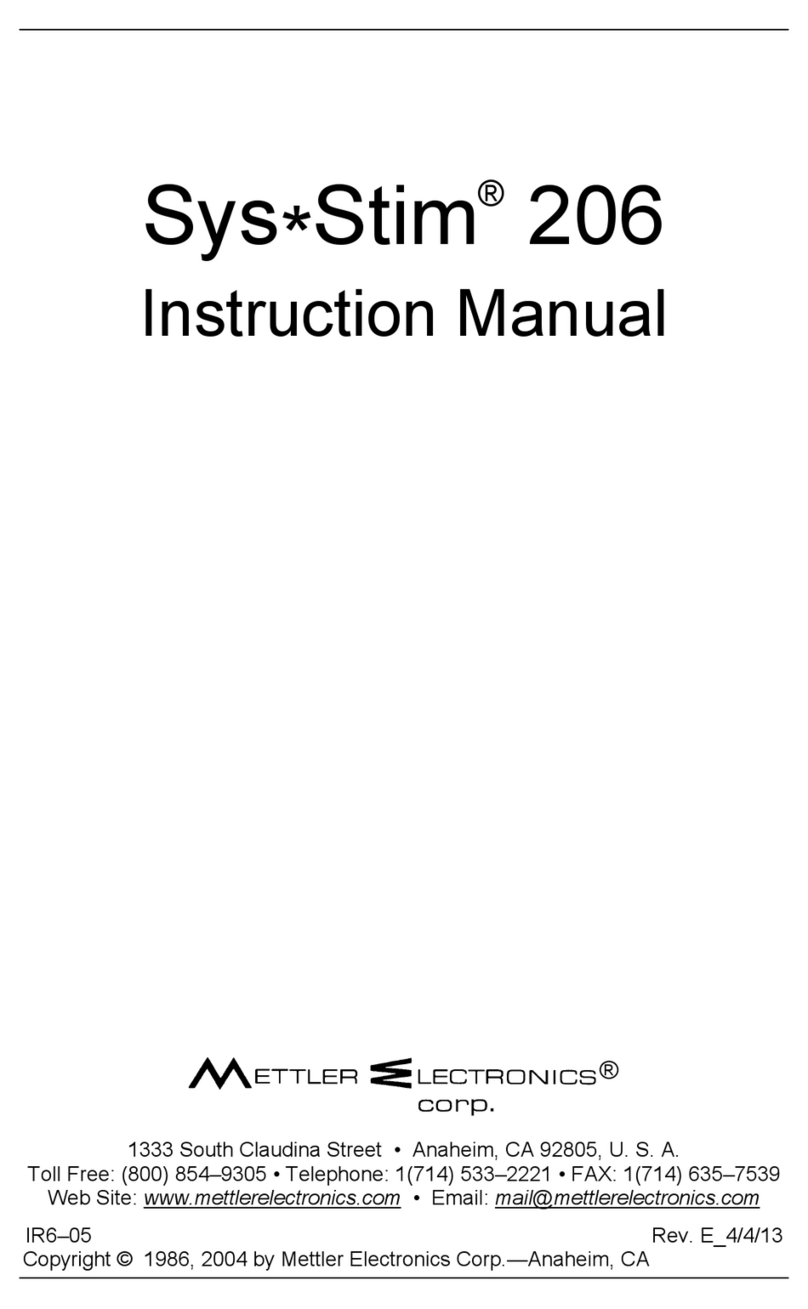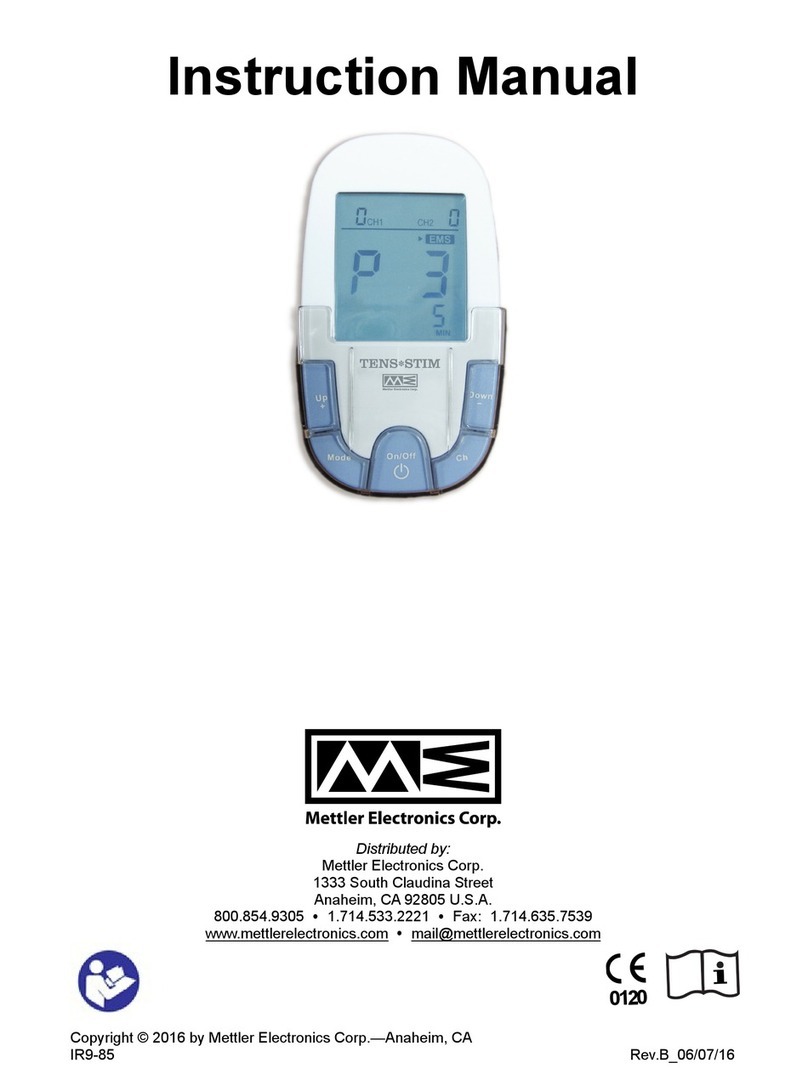
APT – User’s Manual Rev.C_11/19/13 5
1. INTRODUCTION
The APT is an electric exercise machine used for the improvement of physical abilities. The APT provides the user
with a variety of exercise options and modes of operation that meet a broad range of physical needs.
A wide range of accessories are available that offer many exercise options and make the APT suitable for the
maintenance of fitness and physical well being.
The APT can be operated in either the ACTIVE mode at varying degrees of resistance or in the PASSIVE mode at
adjustable speed and torque levels. In the PASSIVE mode it is also possible to combine PASSIVE with ACTIVE train-
ing by using physical effort in conjunction with the electrical operation of the motor. The APT functions forwards or
backwards and is suitable for arm or leg exercises (upper or lower limbs).
The APT’s light weight makes it portable, easy to store and convenient to use in the comfort of one’s home. The unit
is also suitable for use in health care institutions.
Use of the APT is recommended for the maintenance of muscle strength, flexibility, muscle tone, endurance and gen-
eral fitness for users of all ages.































